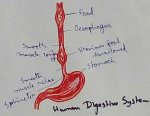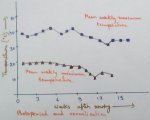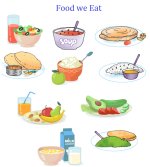Worksheet on Living Things and Non-Living Things
Worksheet on living things and non-living things contains various types of questions on natural and man-made things around us.
Read the concept to answer the questions on living things and non-living things.
I. Fill in the blanks with the words given below:
gills, non-living, alive, reproduce, plant, non-living, move, plants, feel, living
(i) Roads, buildings, cars and pencils are all __________ things.
(ii) All man-made things are __________.
(iii) Plants, animals, human beings are all __________ things.
(iv) Living things need food to stay __________.
(v) Birds __________ by laying eggs.
(vi) A seed grows into a __________.
(vii) Some living things like __________ cannot move.
(viii) Fish breathe through their __________.
(ix) Animals and plants can __________.
(x) A car cannot __________ on its own.
II. Answer the following questions:
1. Give two examples for each:
(i) Living things
(ii) Non-living things
2. How does a plant breathe while it has no nose?
3. Name any five animals which lay eggs.
4. How do most plants reproduce?
III. Tick (T) against the true statement and (F) against the false one:
(i) Animals are natural things.
(ii) Sunflower turns towards the Sun.
(iii) Some man-made things are living things.
(iv) A cat does not reproduce.
(v) No plant breathes.
(vi) All living things grow, become old and finally die.
(vii) Fish are man-made things.
(viii) Birds and animals are living things.
(ix) Tables and chairs are natural things.
(x) Clouds and rain are non-living things.
IV. Circle the odd word in every group:
(i) cat, dog, table, cow, buffalo.
(ii) car, bus, train, bird, motorcycle.
(iii) sun, moon, animal, clouds, rain.
(iv) bee, goat, sun, girl, crow.
V. Name them:
(i) A living thing always fixed in the ground.
(ii) A non-living thing which can move.
(iii) Things made by humans.
(iv) A plant that moves towards the Sun.
Check the answers of worksheet on living things and non-living things:
Answers:
|
I. (i) non-living
(ii) non-living (iii) living (iv) alive (v) reproduce |
(vi) plant
(vii) plants (viii) gills (ix) feel (x) move |
II. 1. (i) humans and animals
(ii) table and chair
2. Plants do not have noses; they breathe through very small openings in their leaves called stomata.
3. Snakes, crocodiles, hens, frogs and ducks lay eggs.
4. Most plants reproduce through seeds.
|
III. (i) T
(ii) T (iii) F (iv) F (v) F |
(vi) T
(vii) F (viii) T (ix) F (x) T |
IV. (i) table
(ii) bird
(iii) animal
(iv) sun
V. (i) plant
(ii) car
(iii) man-made things
(iv) sunflower
• Living and Non-living Things
Worksheet on Living & Non-Living Things
From Worksheet on Living Things and Non-Living Things to HOME PAGE
Recent Articles
-
Eleventh Grade | Eleventh Grade Science | Eleventh Grade Math
Jun 27, 25 12:26 AM
Eleventh grade biology has been designed in accordance with the recommended topics. We will cover all the topics in biology very exciting and interesting way. -
Explain Digestion of Food | Salivary Glands | Oesophagus | Stomach
Jun 27, 25 12:20 AM
Before the digestion is start by the different enzymes secreted from the different digestive glands food must be turned and chut or mixed with saliva inside the mouth. -
Explain Human Digestive System | Mouth | Tongue | Pharynx | Teeth
Jun 21, 25 01:15 PM
Digestive system is a system of alimentary canal and digestive glands. Alimentary canal- alimentary canal is a tube of variable diameter having muscular wall and glandular epithelial tissues which sta… -
Vernalisation in Plants | Definition | Mechanism | Devernalization |
Jun 18, 25 01:34 PM
Definition of vernalisation- The change of flowering habit due to the low temperature treatment is known as vernalisation. This is a physiological process which was denoted by Clipart in 1857 invite b… -
The Food We Eat | Food we Get from Plants and Animals | Carbohydrates
Jun 15, 25 03:20 PM
What are the food that we should eat? Find out the names of ten food items in the word maze. Write the names in the correct column of the table given below. Food we get from plants Food we get from an…




New! Comments
Have your say about what you just read! Leave me a comment in the box below.